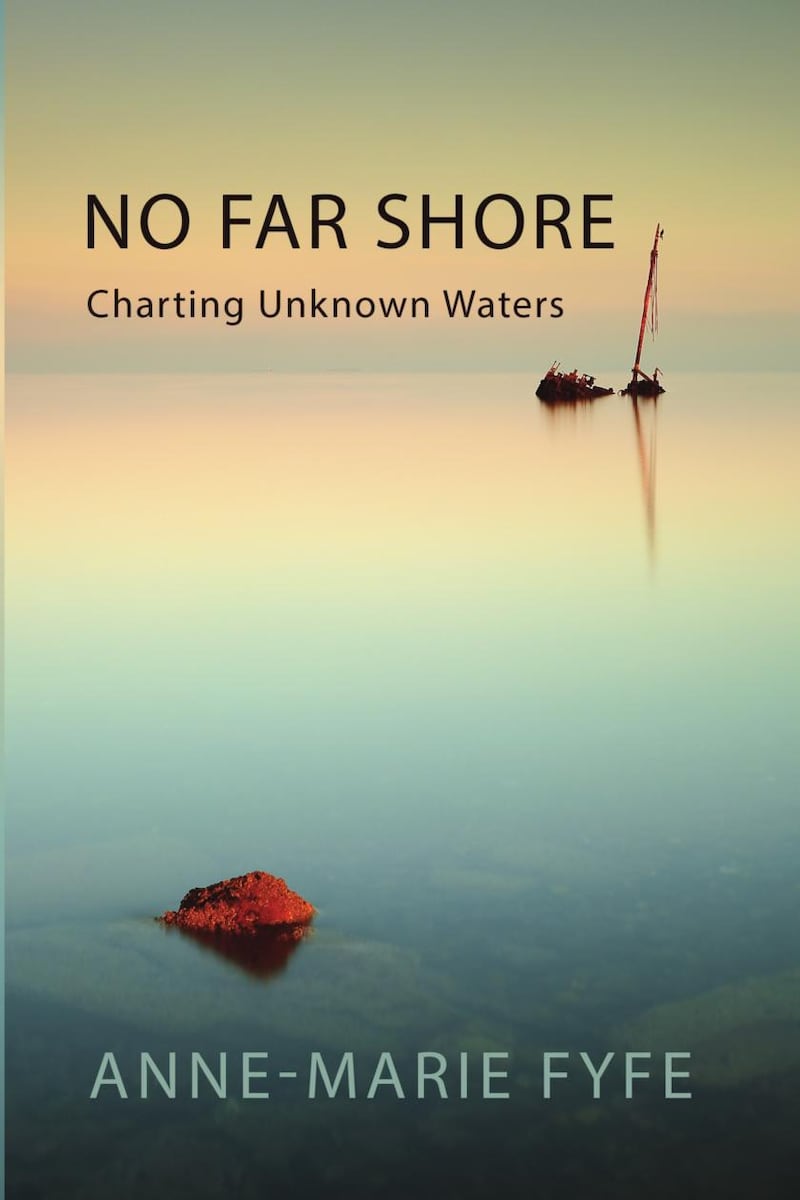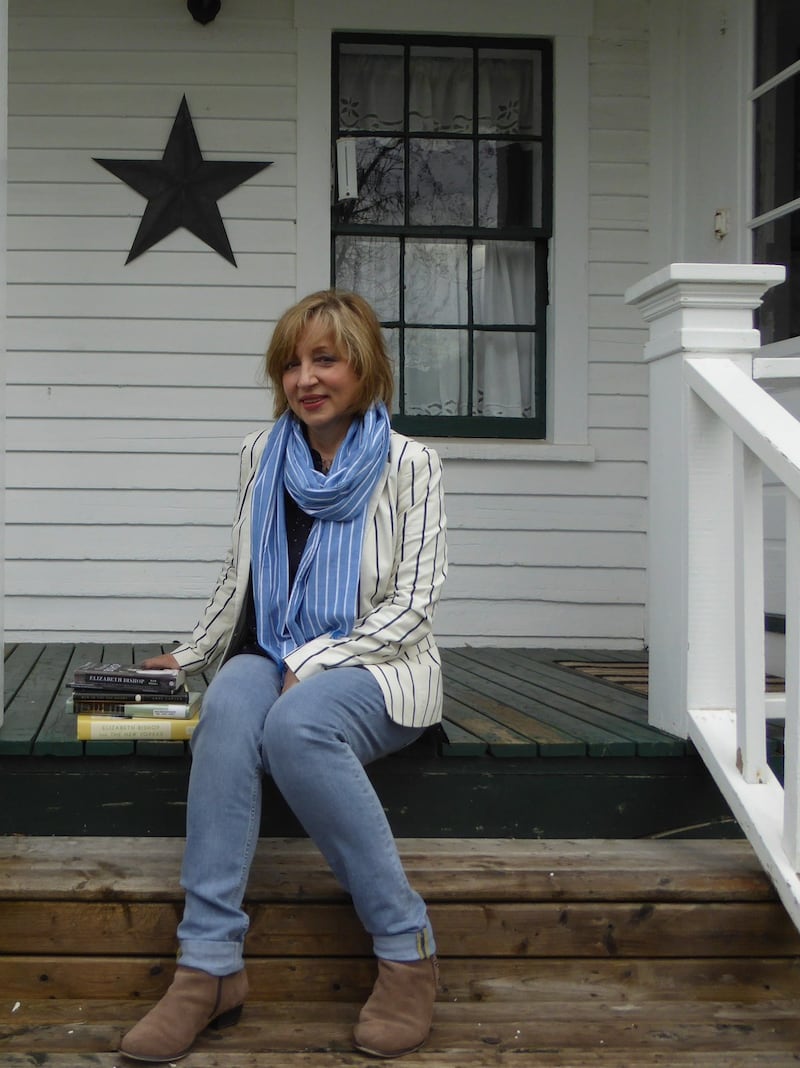When I ask myself what drove me to write No Far Shore: Charting Unknown Waters, one of the answers is the persistence of an earlier question I pose in one of my first published poems, The Sea of Moyle, where I respond to “What brings me back here year after year to this place?” with the obvious, “I’d say it’s the sea every time.”
Though another poem from that time (also entitled, like the book, No Far Shore) hinted at less obvious motives: that I’m not simply drawn by the visual drama of the Cushendall seascape and, due north, the shrouded, distant Scottish highlands and islands, but by a fascination with far horizons, destinationless voyages and the impossibility of resolution.
Both those poems were published before my mother died. And No Far Shore is dedicated to her, and to her mother, whose lives, and absences, emerge not merely as underlying themes of my writing in the years since her death, but as the goal of a coastal “quest” I felt compelled to undertake.

I was aware from all my years of travel that the sea’s lodestone power isn’t limited to my own Glens of Antrim coastline between Garron Point and Layde: so I set out to discover, experience and absorb, over two years, coastal life on both edges of the North Atlantic, from Cornwall and Suffolk to Orkney, Caithness, the Western Isles, Swansea, Cork and Wexford, and to Martha’s Vineyard, Cape Cod, Nantucket, Boston, Portland, Belfast and Bangor (Maine), Nova Scotia and Cape Breton Island.
I was also, of course, aware from all my years of reading – from myths and legends through to novels, memoir and travel writing – that many of my favourite writers shared my ocean obsessions.
And it seemed there was an almost-gender-divide between them. On the one hand some saw “the voyage” as either backdrop for adventure, drama and psychological tension (Coleridge, Melville, Conrad) or metaphor for settings-out into life and beyond (Cavafy, MacNeice). On the other hand, Elizabeth Bishop and Virginia Woolf, for example, were continually drawn back to contemplate maritime vastness, the mysteries of the horizon, the lure of unattainability.
I was familiar with Cornwall’s St Ives, the inspiration behind Woolf’s novel To the Lighthouse and the location of her childhood family holidays. The novel, written in her forties, shows a yearning for an earlier idyllic world centred on her mother, who had died when Virginia was 13.
But I knew, too, of Elizabeth Bishop’s tragic story, of another absent mother, of a constant longing, even when she lived in Brazil, for “northern wooden houses” and of her mention, in the famous villanelle, The Art of Losing, of having lost “three loved houses”.
So I set out to track down houses Bishop loved, with varying results: one almost inaccessible, above a stony beach on Cape Breton Island (where so many of my grandmother’s McNeill family had travelled from Barra – and yes, I visited Barra too, to discover the bleakness that had led a whole clan to migrate, to Antrim or Nova Scotia); one that revealed the amazing outgoingness of seemingly isolated Maine islanders; and the third, a chance to stay in the Nova Scotia house where Bishop was brought up by her maternal grandparents, in the village which so influenced the rest of her life and her writing.

Fellow Antrim coast writer Louis MacNeice – whose childhood holidays took him to Cushendun and Cushendall – says (in The Truisms) “he arrived at a house / He could not remember seeing before […] it was where he had come from”. TS Eliot extends that dream-journey to the general observation that “the end of all our exploring / Will be to arrive where we started / And know the place for the first time”.
Did the quest bring me “home”? Did I know, suddenly, for the first time, really know, the place where I’d grown up? Could I resolve what I’d thought about our own family narrative in my own growing-up years, about mothers, and absences, and the stories behind those absences?
What I did learn from my journeying, and from my much-loved coastal writers, was that many of the areas I wanted to explore in my own and others’ lives (migrations, shipwrecks, ferry ports, both the cut-off-ness and connectedness of islanders, and the complicated coastline of my own family story, including a Belfast shipyard worker grandfather who married a Glens-of-Antrim Catholic) had haunted my poetry. Especially some of the poems I’d published since my mother died, poems of lighthouse-keepers, deserted harbours, lonely headland houses.
The shaping of the story itself may have been inspired by increasing time spent in the US. Apart from the 2017/’18 coastal exploration, writing and research that led to the book, I was 2019 writer-in-residence at Lenoir-Rhyne in North Carolina, a university with strong Irish literature connections thanks to Seamus Heaney’s bibliographer, Rand Brandes. And I’ve spent the past 10 years as visiting poet/creative-writing teacher at universities and colleges across 36 US states. While poetry/prose genre-crossing is being used increasingly there to reflect hybridity in American culture, I felt I could utilise those mixing/sampling techniques in the interests of clarity. A kind of liberation that meant I could diversify into memoir, myth, diary-entries, literary biography, historical fact, family stories, the chronology of a local disaster, even the invention of radio.
And then take off in a final sequence that brings many of the strands together with soundwaves, static, light and shadow, signals, lines of music and snatches of conversation.
The book doesn’t follow a linear pattern, moving rather, through a series of related sections on themes such as maps, islands, tidelines, cloud formations, and the deeper resonances of “north”. But an insistent personal narrative emerges, and one I hadn’t seen so clearly at the setting-out.
No Far Shore is a travel/literary/personal memoir that strays just occasionally, as the mood takes it, into the subjectivity of poetry. So, in terms of writing, I found a new form, or forms. As for the actual “quest”, I was, indeed, to find myself back where I started, as Eliot predicts, but with a wealth of knowing and understanding, and an undiminished love of oceans and their irresistible, primal enchantment.










